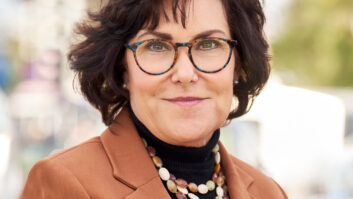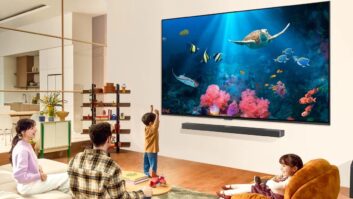Washington— A Federal Communications Commission (FCC) staff proposal to count cable subscribers as digital-television households in order to hasten the return of analog television broadcast spectrum received mostly favorable comments from members of the House Commerce Committee during a public hearing Wednesday.
The plan was also applauded, in part, by the Consumer Electronics Association (CEA), although the National Association of Broadcasters, whose members could be forced to end analog broadcasting before most homes have digital television sets to receive their signals, remained opposed to the proposal.
The National Cable & Telecommunications Association (NCTA) was also wary of a plan that would expand broadcasters’ must-carry rights on cable platforms.
In voicing initial support for the plan, Commerce Committee chairman Joe Barton (R-Texas) said that selling off the analog television spectrum for new technology applications was of greater importance to the country than seeing that 85 percent of U.S. homes have high-definition television sets.
Ranking Democrat John Dingell (D-Mich.) also praised the FCC for its efforts to hasten the return of analog TV spectrum, pointing out that the TV transition will bring new jobs to the economy.
Ken Ferree, FCC Media Bureau Chief, has recommended that cable subscribers qualify as DTV households because cable services would carry the digital television broadcasts and downconvert those signals for display on existing analog TV sets.
Broadcasters are to return their old analog channels to the government by 2007 or when 85 percent of homes in any given market are able to receive DTV signals. Cable operators could then be required to carry all of a broadcaster’s multi-cast standard-definition and HDTV signals, under Ferree’s recommendation.
However, the national DTV adoption rate has fallen well short of 85 percent by the 2007 date. Ferree, who pointed out that it could take until 2050 to reach the 85 percent rate, said under the new plan the spectrum return date should be Jan. 1, 2009.
The FCC also suggested that the remaining consumers who do not subscribe to cable and do not have the means to afford a new digital television set could be given $50 to $100 to purchase a digital-to-analog converter box. The cost could come from the funds the government raises from the auction of the returned analog spectrum.
While commending much of the proposal, CEA president Gary Shapiro suggested several modifications. These included a requirement that cable operators carry all of the free bits of broadcasters’ DTV signals in full resolution and sound in addition to offering downconverted standard-definition output for existing analog sets.
He also called for a requirement that cable operators rely on separable security or “CableCARDs” in the equipment they lease to consumers.
“The DTV transition is not just about recovering the analog spectrum. It also is about bringing a new and improved TV experience to consumers,” Shapiro said. “Indeed, a primary reason that broadcasters were allocated 6MHz of spectrum in the first place was to allow them to provide their viewers with a full high-definition signal.”
To further push the adoption of DTV sets, Shapiro asked that broadcasters be required to deliver their digital signals at full power to fully replicate the coverage of their analog service areas. He also asked that direct broadcast satellite TV providers be allowed to carry distant network signals to so-called “white areas” (areas out of reach of broadcast signals) and called for the rejection of “selectable output controls” and other measures that threaten home recording and fair-use rights.
In opposing the proposal, Eddie Fritts, NAB president, said that “by counting local television signals that cable companies downconvert into analog format as digital, the plan would turn the congressionally mandated 85 percent consumer threshold on its head.
“Millions of Americans would potentially lose their local television service altogether, and millions more would find secondary television sets in their homes rendered obsolete. This was never the public policy objective of Congress,” he continued.
Robert Sachs, NCTA president, said, “Imposing multicast carriage requirements would do nothing to advance the digital transition. Most obviously, a multicast must carry rule, were it legal, would, under the Bureau’s plan, take effect only after the broadcaster has returned its analog spectrum.
“By counting a broadcaster’s single downconverted signal carried by cable towards the 85 percent test, the Bureau’s plan already would achieve the goal of expediting the transition’s end,” he added.













